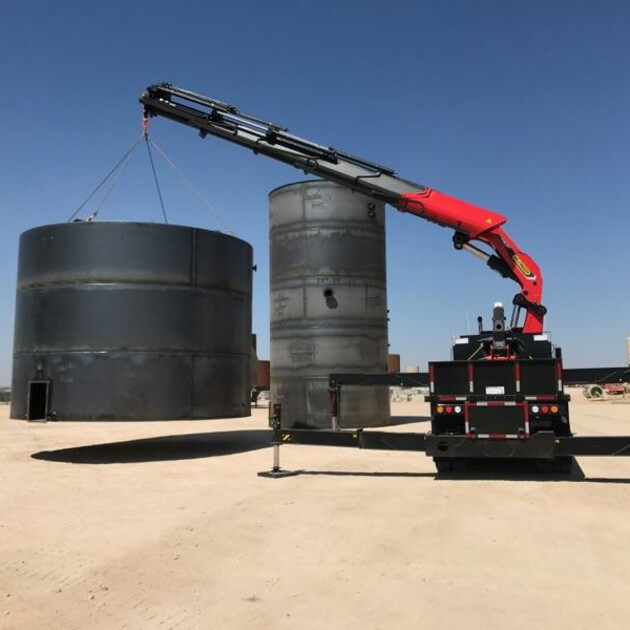This article explores the crucial role that cranes play in the oil and gas sector, specifically in the context of exploration activities. Cranes are essential for lifting heavy equipment and materials, enabling the exploration process to run smoothly and efficiently. By understanding the importance of cranes in this industry, we can gain insight into the complexities and challenges involved in oil and gas exploration.
The Role of Cranes in the Oil and Gas Sector: Enhancing Exploration Efforts
Cranes play a crucial role in the oil and gas sector by enhancing exploration efforts. These heavy-duty machines are used for various tasks, such as lifting and moving heavy equipment, materials, and structures. In the oil and gas industry, cranes are essential for drilling operations, as they are used to lift and position drilling rigs and equipment. They are also used for the installation and maintenance of pipelines, platforms, and other offshore structures. Cranes in this sector are designed to withstand harsh weather conditions and operate in challenging environments. Their efficiency and reliability contribute to the overall success of exploration efforts in the oil and gas industry.
Types of Cranes Used in the Oil and Gas Industry: A Comprehensive Overview

In the oil and gas industry, cranes play a crucial role in various operations. There are several types of cranes used in this industry, each designed to meet specific requirements. One commonly used crane is the mobile crane, which is versatile and can be easily transported to different locations. Another type is the tower crane, which is often used for heavy lifting and construction purposes. The offshore crane is specifically designed for use on offshore platforms and vessels. Additionally, the gantry crane is used for lifting heavy loads in a fixed location. Overall, these different types of cranes are essential in ensuring efficient and safe operations in the oil and gas industry.
Safety Measures and Regulations for Crane Operations in the Oil and Gas Sector
Safety measures and regulations for crane operations in the oil and gas sector are of utmost importance to ensure the well-being of workers and prevent accidents. Cranes are commonly used in this industry for various tasks such as lifting heavy equipment and materials. To maintain a safe working environment, strict guidelines and regulations are in place. These include regular inspections and maintenance of cranes, proper training and certification for crane operators, and adherence to load capacity limits. Additionally, safety measures such as the use of safety harnesses, barricades, and warning signs are implemented to prevent unauthorized access to crane operation areas. By following these safety measures and regulations, the oil and gas sector can minimize the risk of accidents and protect the lives of workers.
The Importance of Proper Crane Maintenance in the Oil and Gas Industry
Proper crane maintenance is of utmost importance in the oil and gas industry. Cranes play a crucial role in various operations, such as lifting heavy equipment and materials, and ensuring their proper functioning is essential for the safety and efficiency of the entire operation. Regular maintenance helps identify and address any potential issues before they escalate into major problems, reducing the risk of accidents and downtime. It also extends the lifespan of the crane, saving companies from costly repairs or replacements. By investing in proper crane maintenance, oil and gas companies can ensure the smooth and uninterrupted flow of their operations, ultimately leading to increased productivity and profitability.
Challenges Faced by Cranes in the Oil and Gas Sector: Overcoming Limitations
The oil and gas sector presents unique challenges for cranes, requiring them to overcome various limitations. One major challenge is the harsh and unpredictable working conditions. Cranes must be able to withstand extreme temperatures, high winds, and corrosive environments. Additionally, the weight and size of the equipment being lifted can be immense, requiring cranes to have high lifting capacities and stability. Another limitation is the limited space available on offshore platforms or in tight refinery areas. Cranes must be compact and maneuverable to operate in these confined spaces. Lastly, safety is a critical concern, as any accidents or failures can have catastrophic consequences. Cranes in the oil and gas sector must adhere to strict safety regulations and undergo regular inspections to ensure their reliability and performance.
Future Trends in Crane Technology for the Oil and Gas Industry: Advancements and Innovations
The oil and gas industry is constantly evolving, and so is the technology used in this sector. One area that has seen significant advancements and innovations is crane technology. Cranes play a crucial role in the oil and gas industry, as they are used for lifting heavy equipment and materials. In recent years, there has been a shift towards more advanced and efficient crane systems. These new technologies include the use of automation and remote control, which not only improve safety but also increase productivity. Additionally, there have been developments in crane design, with the introduction of lighter and more compact models that can operate in confined spaces. Overall, the future of crane technology in the oil and gas industry looks promising, with continued advancements expected to enhance efficiency and safety.
Conclusion
In conclusion, cranes play a crucial role in the oil and gas sector, particularly in the exploration phase. They are essential for lifting heavy equipment and materials, ensuring smooth operations and efficient exploration. As the industry continues to evolve and explore new frontiers, the demand for cranes in this sector is expected to grow, driving innovation and advancements in crane technology.
What is the role of cranes in the oil and gas sector?
Cranes play a crucial role in the oil and gas sector by providing lifting and hoisting solutions for various operations, such as exploration, drilling, construction, and maintenance.
What types of cranes are commonly used in the oil and gas sector?
Commonly used cranes in the oil and gas sector include mobile cranes, tower cranes, offshore cranes, and overhead cranes. The specific type of crane used depends on the nature of the operation and the environment.
What are the benefits of using cranes in the oil and gas sector?
Using cranes in the oil and gas sector offers several benefits, including increased efficiency, improved safety, and enhanced productivity. Cranes enable the lifting of heavy equipment and materials, reducing manual labor and minimizing the risk of accidents.
How are cranes maintained in the oil and gas sector?
Cranes in the oil and gas sector undergo regular maintenance and inspections to ensure their safe and efficient operation. This includes routine checks, lubrication, and repairs as needed. Trained technicians and engineers are responsible for maintaining the cranes.
What safety measures are in place when using cranes in the oil and gas sector?
When using cranes in the oil and gas sector, strict safety measures are implemented to protect workers and prevent accidents. These measures include proper training for crane operators, adherence to safety protocols, regular equipment inspections, and the use of safety devices such as load indicators and anti-collision systems.
Are there any regulations governing the use of cranes in the oil and gas sector?
Yes, there are regulations and standards in place to ensure the safe and proper use of cranes in the oil and gas sector. These regulations cover aspects such as crane design, operation, maintenance, and training requirements for operators. Compliance with these regulations is essential to maintain a safe working environment.

